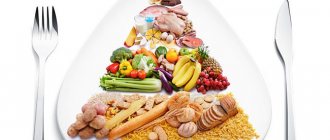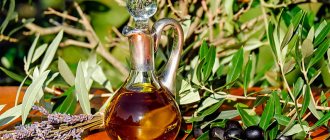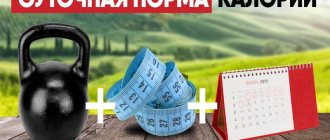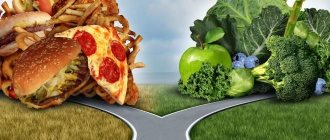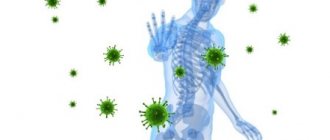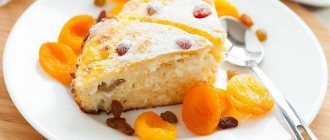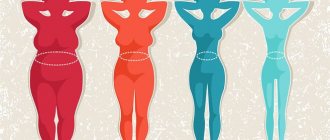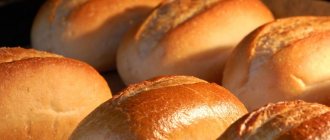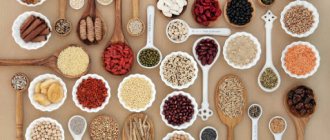Authorized Products
The list of products for cleansing is limited:
- Vegetables in fresh, stewed, baked and boiled form.
- Greens, onions and garlic.
- Bean dishes.
- Pickled vegetables and fruits are natural probiotics obtained through fermentation. Under the influence of lactobacilli , sugar is broken down and organic acids and enzymes are released.
- A variety of porridges in water after pre-frying the cereals. You can cook dishes with vegetables and mushrooms.
- Vegetarian vegetable and legume soups.
- Rye bread, whole grain, with bran, black bread crackers.
- Various vegetable oils for seasoning dishes and for preventive use. Milk thistle, cedar and pumpkin oils get rid of helminths and fungi. Apricot - heals blood vessels and is useful for heart diseases. Flaxseed oil is a source of omega 3 and 6 fatty acids in the most favorable ratio for the body.
- Fruits and berries without restrictions.
- Aromatic herbs, spices and seasonings that should be used extensively. Bay leaf, cloves, and turmeric have antiparasitic properties. Cloves have a very wide spectrum of antiparasitic effects. Its inflorescences can be chewed and swallowed daily. All parts of barberry, especially the root, contain substances that are harmful to liver parasites. Ground dried root is added to all dishes. Basil has an effect on single-celled parasites, so it should be consumed fresh and dried as often as possible. This list can be supplemented with cinnamon, elecampane, oregano, coriander, lemon balm, plantain, chamomile, yarrow, fennel and sage. Milk thistle seeds cleanse the liver and improve its function.
- Green and black tea without sugar, vegetable juices, fruit drinks, purified water, herbal infusions.
Table of permitted products
| Proteins, g | Fats, g | Carbohydrates, g | Calories, kcal | |
Vegetables and greens | ||||
| greenery | 2,6 | 0,4 | 5,2 | 36 |
| eggplant | 1,2 | 0,1 | 4,5 | 24 |
| beans | 6,0 | 0,1 | 8,5 | 57 |
| zucchini | 0,6 | 0,3 | 4,6 | 24 |
| cabbage | 1,8 | 0,1 | 4,7 | 27 |
| broccoli | 3,0 | 0,4 | 5,2 | 28 |
| boiled cauliflower | 1,8 | 0,3 | 4,0 | 29 |
| boiled potatoes | 2,0 | 0,4 | 16,7 | 82 |
| bulb onions | 1,4 | 0,0 | 10,4 | 41 |
| carrot | 1,3 | 0,1 | 6,9 | 32 |
| cucumbers | 0,8 | 0,1 | 2,8 | 15 |
| salad pepper | 1,3 | 0,0 | 5,3 | 27 |
| radish | 1,2 | 0,1 | 3,4 | 19 |
| white radish | 1,4 | 0,0 | 4,1 | 21 |
| red radish | 1,2 | 0,1 | 3,4 | 20 |
| black radish | 1,9 | 0,2 | 6,7 | 35 |
| salad | 1,2 | 0,3 | 1,3 | 12 |
| beet | 1,5 | 0,1 | 8,8 | 40 |
| celery | 0,9 | 0,1 | 2,1 | 12 |
| soybeans | 34,9 | 17,3 | 17,3 | 381 |
| asparagus | 1,9 | 0,1 | 3,1 | 20 |
| tomatoes | 0,6 | 0,2 | 4,2 | 20 |
| Jerusalem artichoke | 2,1 | 0,1 | 12,8 | 61 |
| pumpkin | 1,3 | 0,3 | 7,7 | 28 |
| beans | 7,8 | 0,5 | 21,5 | 123 |
| garlic | 6,5 | 0,5 | 29,9 | 143 |
| lentils | 24,0 | 1,5 | 42,7 | 284 |
| spinach | 2,9 | 0,3 | 2,0 | 22 |
| sorrel | 1,5 | 0,3 | 2,9 | 19 |
Fruits | ||||
| avocado | 2,0 | 20,0 | 7,4 | 208 |
| oranges | 0,9 | 0,2 | 8,1 | 36 |
| bananas | 1,5 | 0,2 | 21,8 | 95 |
| pomegranate | 0,9 | 0,0 | 13,9 | 52 |
| grapefruit | 0,7 | 0,2 | 6,5 | 29 |
| pears | 0,4 | 0,3 | 10,9 | 42 |
| kiwi | 1,0 | 0,6 | 10,3 | 48 |
| lemons | 0,9 | 0,1 | 3,0 | 16 |
| mango | 0,5 | 0,3 | 11,5 | 67 |
| tangerines | 0,8 | 0,2 | 7,5 | 33 |
| nectarine | 0,9 | 0,2 | 11,8 | 48 |
| peaches | 0,9 | 0,1 | 11,3 | 46 |
| apples | 0,4 | 0,4 | 9,8 | 47 |
Berries | ||||
| grape | 0,6 | 0,2 | 16,8 | 65 |
| gooseberry | 0,7 | 0,2 | 12,0 | 43 |
| Red currants | 0,6 | 0,2 | 7,7 | 43 |
| black currant | 1,0 | 0,4 | 7,3 | 44 |
Mushrooms | ||||
| mushrooms | 3,5 | 2,0 | 2,5 | 30 |
Nuts and dried fruits | ||||
| nuts | 15,0 | 40,0 | 20,0 | 500 |
| raisin | 2,9 | 0,6 | 66,0 | 264 |
| cashew | 25,7 | 54,1 | 13,2 | 643 |
| sesame | 19,4 | 48,7 | 12,2 | 565 |
| flax seeds | 18,3 | 42,2 | 28,9 | 534 |
| fenugreek seeds | 23,0 | 6,4 | 58,3 | 323 |
| sunflower seeds | 20,7 | 52,9 | 3,4 | 578 |
Cereals and porridges | ||||
| buckwheat (kernel) | 12,6 | 3,3 | 62,1 | 313 |
| oat groats | 12,3 | 6,1 | 59,5 | 342 |
| cereals | 11,9 | 7,2 | 69,3 | 366 |
| millet cereal | 11,5 | 3,3 | 69,3 | 348 |
| white rice | 6,7 | 0,7 | 78,9 | 344 |
| brown rice | 6,3 | 4,4 | 65,1 | 331 |
Flour and pasta | ||||
| pasta | 10,4 | 1,1 | 69,7 | 337 |
Bakery products | ||||
| Rye bread | 6,6 | 1,2 | 34,2 | 165 |
Raw materials and seasonings | ||||
| honey | 0,8 | 0,0 | 81,5 | 329 |
Fish and seafood | ||||
| seaweed | 0,8 | 5,1 | 0,0 | 49 |
Oils and fats | ||||
| linseed oil | 0,0 | 99,8 | 0,0 | 898 |
| olive oil | 0,0 | 99,8 | 0,0 | 898 |
| sunflower oil | 0,0 | 99,9 | 0,0 | 899 |
Non-alcoholic drinks | ||||
| mineral water | 0,0 | 0,0 | 0,0 | — |
| green tea | 0,0 | 0,0 | 0,0 | — |
| black tea | 20,0 | 5,1 | 6,9 | 152 |
Juices and compotes | ||||
| carrot juice | 1,1 | 0,1 | 6,4 | 28 |
| cucumber juice | 0,8 | 0,1 | 2,5 | 14 |
| tomato juice | 1,1 | 0,2 | 3,8 | 21 |
| * data is per 100 g of product | ||||
“MACARONI MOSAIC” SALAD
- Products:
150 g pasta (medium-sized spirals, feathers, cones or shells), 150 g lean boiled meat or lean ham, 1 tomato (100 g), sweet pepper (100 g), 2-3 stalks of celery (75 g), 10 -12 pitted olives (50 g), half a lemon, parsley, 1 tablespoon vegetable oil, half a teaspoon honey, a pinch of rock or sea salt, freshly ground pepper
Pour the pasta into boiling water and cook as indicated on the package (you can also successfully use the remains of yesterday’s boiled pasta). Drain in a colander, let the water drain, cool and transfer to a large salad bowl. Cut the meat and pepper into thin strips 2-3 cm long, tomatoes into slices, celery into pieces 2 cm long, put in a salad bowl with pasta, add olives and mix.
Squeeze the juice from half a lemon (3-4 tablespoons), mix thoroughly with vegetable oil, honey and a teaspoon of very finely chopped lemon zest and finely chopped parsley.
Season the salad with the resulting sauce, add salt and freshly ground pepper, stir, let stand for 30 minutes in the refrigerator, stir again and serve.
It will work out
6 servings. Calorie content per serving is 155 kcal. Fat content: 4 g per serving
Fully or partially limited products
- Meat, fish, poultry.
- Eggs.
- Dairy products.
- Fried products.
- Animal fats.
- Sugar and all kinds of sweets, yeast baked goods, sweets, chocolate, cookies, cakes.
In everyday life, you should consume less meat, animal fats and milk. Weakened and sick people should not consume these foods at all, so as not to overload the digestive system.
Sugar and all products containing it do not contain useful substances and carry empty calories. It causes a sharp increase in insulin in the blood and the level of “bad” cholesterol , causing the risk of diabetes , obesity and atherosclerosis .
Table of prohibited products
| Proteins, g | Fats, g | Carbohydrates, g | Calories, kcal | |
Confectionery | ||||
| jam | 0,3 | 0,2 | 63,0 | 263 |
| jam | 0,3 | 0,1 | 56,0 | 238 |
| candies | 4,3 | 19,8 | 67,5 | 453 |
| pastry cream | 0,2 | 26,0 | 16,5 | 300 |
| cookie | 7,5 | 11,8 | 74,9 | 417 |
Ice cream | ||||
| ice cream | 3,7 | 6,9 | 22,1 | 189 |
Cakes | ||||
| cake | 4,4 | 23,4 | 45,2 | 407 |
Chocolate | ||||
| chocolate | 5,4 | 35,3 | 56,5 | 544 |
Raw materials and seasonings | ||||
| mustard | 5,7 | 6,4 | 22,0 | 162 |
| mayonnaise | 2,4 | 67,0 | 3,9 | 627 |
Dairy | ||||
| milk 3.6% | 2,8 | 3,6 | 4,7 | 62 |
| milk 4.5% | 3,1 | 4,5 | 4,7 | 72 |
| cream | 2,8 | 20,0 | 3,7 | 205 |
| sour cream 25% (classic) | 2,6 | 25,0 | 2,5 | 248 |
Cheeses and cottage cheese | ||||
| cheese | 24,1 | 29,5 | 0,3 | 363 |
| cottage cheese 11% | 16,0 | 11,0 | 1,0 | 170 |
| cottage cheese 18% (fat) | 14,0 | 18,0 | 2,8 | 232 |
Meat products | ||||
| pork | 16,0 | 21,6 | 0,0 | 259 |
| pork liver | 18,8 | 3,6 | 0,0 | 108 |
| pork kidneys | 13,0 | 3,1 | 0,0 | 80 |
| pork fat | 1,4 | 92,8 | 0,0 | 841 |
| salo | 2,4 | 89,0 | 0,0 | 797 |
| beef liver | 17,4 | 3,1 | 0,0 | 98 |
| beef kidneys | 12,5 | 1,8 | 0,0 | 66 |
| beef brains | 9,5 | 9,5 | 0,0 | 124 |
Sausages | ||||
| smoked sausage | 16,2 | 44,6 | 0,0 | 466 |
| smoked sausage | 9,9 | 63,2 | 0,3 | 608 |
| sausages | 10,1 | 31,6 | 1,9 | 332 |
| sausages | 12,3 | 25,3 | 0,0 | 277 |
Bird | ||||
| smoked chicken | 27,5 | 8,2 | 0,0 | 184 |
| duck | 16,5 | 61,2 | 0,0 | 346 |
| smoked duck | 19,0 | 28,4 | 0,0 | 337 |
| goose | 16,1 | 33,3 | 0,0 | 364 |
Fish and seafood | ||||
| smoked fish | 26,8 | 9,9 | 0,0 | 196 |
| salted fish | 19,2 | 2,0 | 0,0 | 190 |
| Red caviar | 32,0 | 15,0 | 0,0 | 263 |
| black caviar | 28,0 | 9,7 | 0,0 | 203 |
| canned fish | 17,5 | 2,0 | 0,0 | 88 |
| cod (liver in oil) | 4,2 | 65,7 | 1,2 | 613 |
Oils and fats | ||||
| animal fat | 0,0 | 99,7 | 0,0 | 897 |
| cooking fat | 0,0 | 99,7 | 0,0 | 897 |
Non-alcoholic drinks | ||||
| instant coffee dry | 15,0 | 3,5 | 0,0 | 94 |
| * data is per 100 g of product | ||||
Principles of separate nutrition
The creators of the theory of separate nutrition are Dr. Howard Hay and naturalist Herbert Shelton. More than 100,000 people suffering from various serious diseases passed through the school of separate meals created by Shelton. Many of them showed amazing results in restoring health. What is the essence of separate nutrition?
All food products are divided into three groups: proteins, plant foods and carbohydrates. In the gastrointestinal tract, plant foods can be digested in any environment. Proteins are broken down mainly by acidic reagents. Carbohydrates - alkaline reagents. There are also fats, but they are combined with both proteins and carbohydrates.
Since carbohydrates and proteins require different environments for successful digestion, their simultaneous consumption leads to inefficiency in the gastrointestinal tract. Foods that are incompatible with each other complicate the digestion process, unoxidized fats and carbohydrates are stored as fat, and the resulting toxins create additional stress on the body.
The founder of the theory, Herbert Shelton, wrote: “We get no benefit from food that is not digestible. Eating and at the same time spoiling food in the digestive tract is a waste of food.” But even worse is the fact that in addition to wasting food, undigested food, while in the gastrointestinal tract, leads to the formation of toxins that are very harmful to the body and you have to spend additional energy to fight them. The ignorant man in the street considers himself a “giant pipe - an incinerator”, into which food enters at one end, and “garbage” comes out of the other. Throw whatever you want into the chimney - everything will burn! - almost everyone thinks. Yes, it will burn, but if you throw the wrong products into this “pipe”, from 25 to 50 years of your life will burn there!
The logic of separate nutrition is to divide the tables into protein and carbohydrate.
The carbohydrate table includes foods whose main components are carbohydrates (flour, sweets, cereals, potatoes, cereals). This is the so-called energy kitchen. It is quickly digested. Carbohydrates and plant foods should form the basis of your daily diet. The protein table includes protein-containing foods (meat, fish, eggs, nuts). For the normal functioning of the body, the presence of proteins is necessary. But when fed separately, they are completely digested, so their quantity must be kept to a minimum. Eating meat 1-2 times a week is quite enough.
By consuming only compatible products at the same time, we make it easier for our body to work. Food that is homogeneous in chemical composition has time to be completely processed within 2 hours and self-destruct from the body.
With the simultaneous consumption of proteins and carbohydrates, acidic and alkaline secretions are produced. As a result, food is not completely processed and is deposited in the folds of the large intestine.
The minimum break between consuming proteins and carbohydrates should be at least 2 hours.
Proper nutrition and energy expenditure
With poor nutrition and cluttering of the body, a huge amount of energy is spent on digestion and neutralization of food toxins. Therefore, the right combination of products releases a huge amount of bioenergy for life. Digestion, as a complex biochemical process, with separate nutrition occurs in the gastrointestinal tract in clean conditions and with the least amount of hormones, enzymes, and gastrointestinal juice. Those people who live by observing the laws of product compatibility do not know what heaviness in the stomach, heartburn, and dull pain in the intestines are.
Separate nutrition contributes to:
- cleansing the intestines of accumulated sediment of undigested foods;
- intoxication of the body decreases;
- well-being improves;
- eliminates bad breath;
- eliminates dysbiosis and constipation, cleansing the gastrointestinal tract and digestive system;
- removes toxins from the body;
- restores balance in the functioning of almost all organs;
- significantly contributes to getting rid of excess weight.
- With constant use, you can achieve tremendous results and not gain excess weight.
1. Meat, fish, poultry (fast) The first column is the most important, because This is where it is easiest to break product compatibility rules. Meat, fish, poultry must be lean. When processing these foods, all external fat must be removed. For all types of meat, the combination with green and non-starchy vegetables is beneficial, since this combination neutralizes the harmful properties of animal proteins, helps them digest and remove excess cholesterol from the blood. The combination of animal proteins with alcohol causes great harm, because... alcohol precipitates pepsin, which is necessary for the digestion of animal proteins.
2. Cereals, legumes These are beans, beans, soybeans, peas, lentils, etc. The compatibility of grain legumes with other products is explained by their dual nature. As starches, they go well with fats, especially easy-to-digest fats - vegetable oil and sour cream, and as a source of vegetable protein they are good with herbs and starchy vegetables.
3. Butter, cream Only a product obtained from cream and meeting the requirements of GOST 37-91 “Cow butter”, with a fat content of at least 82.5%, can be called butter. Everything that is produced not according to GOST, but according to specifications (technical conditions) or with a fat content of less than 82.5% is no longer butter, even if the packaging says: “Cow butter”, “Butter with reduced content...”, etc. P. Under no circumstances should butter be stored in glass butter dishes - when exposed to light, all the vitamins in the butter lose their qualities within the first 24 hours. It is recommended to consume butter in limited quantities.
4. Sour cream Sour cream is obtained from cream by mixing it with starter cultures of lactic acid bacteria. It contains a sufficient amount of vitamins A, D, K, B, C, nicotinic acid PP, as well as microelements valuable for our body - cobalt, calcium, copper, manganese, molybdenum. We recommend limiting its use.
5. Vegetable oil Vegetable oil is a very healthy product if it is consumed raw and unrefined.
6. Sugar, confectionery This is sugar, jams, syrups. Consumption of sugar and confectionery products should be avoided. All sugars inhibit the secretion of gastric juice. Neither saliva nor gastric juice are needed to digest them: they are absorbed directly in the intestines. If sweets are eaten with other foods, then lingering in the stomach for a long time, they very soon cause fermentation in it and, in addition, reduce the mobility of the stomach. Sour belching and heartburn are the results of this process. Honey is excluded from the category of sugars because honey is a product already processed by the digestive apparatus of bees, is absorbed into the blood 20 minutes after ingestion and does not burden the liver and all other body systems. 7. Bread, cereals, potatoes Starchy foods: wheat, rye, oats and products made from them (bread, noodles, pasta, etc.). Cereals: buckwheat, rice, millet, etc. All products rich in starch should always be treated with great attention, because starch itself, in its pure form, is an extremely difficult to digest product. The ban on combining animal proteins with starchy foods is the first and, perhaps, the most important law of separate nutrition. Bread is considered a separate meal (for example, with butter), and not a required addition to every meal. However, bread made from unrefined, whole grains can be eaten with various salads, regardless of their composition.
8. Sour fruits, tomatoes Sour fruits include: oranges, tangerines, grapefruits, pineapples, pomegranates, lemons, cranberries; sour fruits: apples, pears, plums, apricots, grapes. Tomatoes are distinguished from all vegetables by their high content of acids - citric, malic, oxalic. Semi-acidic fruits: blueberries, strawberries, raspberries, strawberries, sweet-tasting: apples, cherries, plums, grapes, apricots, peaches.
9. Sweet fruits, dried fruits. Their combination with milk and nuts is acceptable, but in small quantities, because it's hard on digestion. But it’s better not to combine fruits (sour and sweet) with anything at all, because... they are absorbed in the intestines. You need to eat them at least 15-20 minutes before eating. This rule should be especially strict in relation to watermelons and melons.
10. Green and non-starchy vegetables These include the tops of all edible plants (parsley, dill, celery, radish tops, beets), lettuce, wild “table” herbs, as well as white cabbage, green and onions, garlic, cucumbers, eggplants , bell pepper, green peas. Radishes, rutabaga, radishes and turnips are “semi-starchy” vegetables, which, in combination with various products, are more likely to be green and non-starchy.
11. Starchy vegetables This category includes: beets, carrots, horseradish, parsley and celery roots, pumpkin, zucchini and squash, cauliflower. The combination of these vegetables with sugar causes strong fermentation; other combinations are either good or acceptable.
12. Milk Milk is a separate food, not a drink. Once in the stomach, the milk must curdle under the influence of acidic juices. If there is other food in the stomach, then the milk particles envelop it, isolating it from the gastric juice. And until the curdled milk is digested, the food remains unprocessed, rots, and the digestion process is delayed. We recommend that it is better to eat milk separately from other foods.
13. Cottage cheese, fermented milk products Cottage cheese is a difficult-to-digest complete protein. Products that are homogeneous with sour milk (sour cream, cheese, feta cheese) are compatible.
14. Cheese, feta cheese The most acceptable cheeses are young cheeses like homemade ones, i.e. something between cottage cheese and cheese. Processed cheeses are an unnatural product, significantly processed. Cheese cheese is a healthy protein product, which, however, requires soaking in cold water to remove excess salt.
15. Eggs This protein product is not easy to digest. However, eggs are not so bad: combining them with green and non-starchy vegetables neutralizes the harm from the high cholesterol content in the yolk.
16. Nuts Due to their rich fat content, nuts are similar to cheese. However, cheese contains animal fats, and nuts are easily digestible vegetable fats. We recommend eating more plant foods than animal foods.
17. Melon Melons are incompatible with any other products. Strictly eat separately from other foods within 3 hours.
Advantages and disadvantages
| pros | Minuses |
|
|
Reviews and results
Reviews about this technique are as diverse as the attitude towards it.
- “... I cleaned myself according to Semenova, at home. Perhaps I didn’t finish something or didn’t do it quite right. The parasites did not come out, but overall I began to feel better. First of all, I lost weight, pain in the right hypochondrium and bloating stopped bothering me. Appetite became moderate. Regarding the consequences of enemas, I want to say that, on the contrary, my peristalsis has become better. If you are afraid that you will wash out the flora, take a probiotic. If you feel weak, constant bloating, skin rashes and other manifestations of allergies, do not delay cleaning.”
- “... My husband and I cleaned ourselves according to Semenova’s scheme three times every six months. This system works and I like the integrated approach. My health has improved. My husband has severe allergies and his dermatitis went away, and allergic rhinitis became less of a problem. Now I’m too lazy to take the full course and don’t want to do enemas. However, we drink an antiparasitic mixture three times a year (it’s easy and time-consuming), chew cloves, drink nut and garlic tinctures. We try to eat healthy, but we haven’t given up meat. I can sincerely recommend it, but I want to say that it’s not easy.”
- “... The method works, but you need to have desire, willpower and be very organized in order to patiently bring everything to the end. As a result, my furunculosis, which happened every six months, went away. But for me, enemas were not a suitable option, since they were painful for me, and after them I was constipated for several days. So I found an alternative - a herbal laxative and a saline laxative. Otherwise, I did everything by the book: nutrition, herbs, and so on. My brother had diathesis from early childhood, he was treated constantly, but without success. I forced him to do the cleaning too, although he did not agree for a long time. Flakes came out of the intestines, and on the 3rd day after the garlic enema, roundworm came out. The diathesis began to go away little by little, and after a month it disappeared.”
- “... I attended Semenova’s cleansing program in 2008. Every day there was exercise, enemas, saunas, proper nutrition. If everything is organized, it is easy to move. I lost weight, but my body could barely cope. After frequent enemas, the skin began to deteriorate and acne appeared, which was not there before. I developed bloating and constipation. Hair began to thin. It took a long time to restore the intestines and flora. Digestion gradually improved and everything returned to normal. Of course, I will never dare to execute again.”
